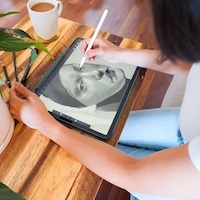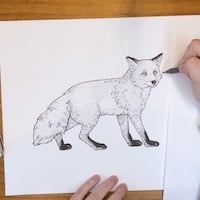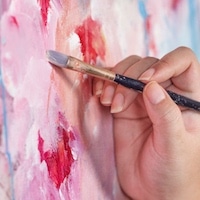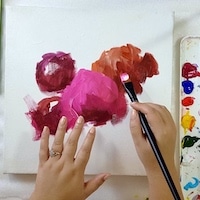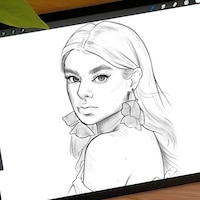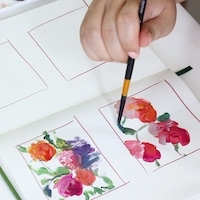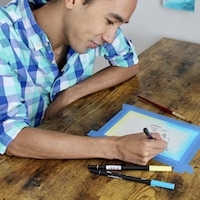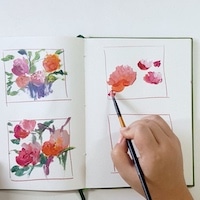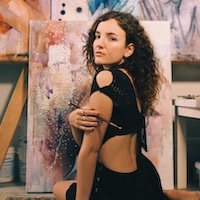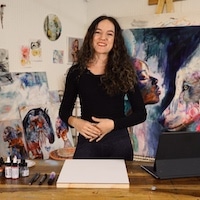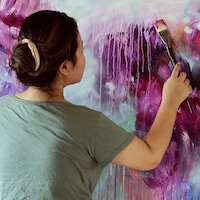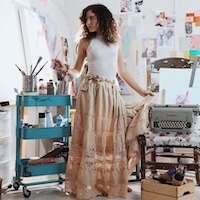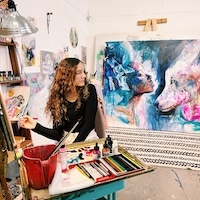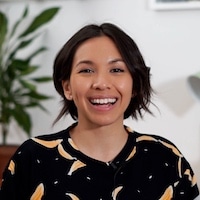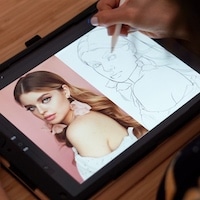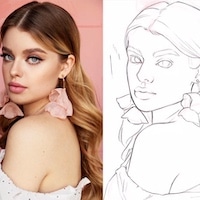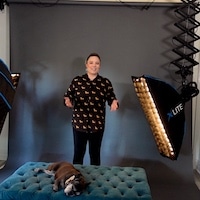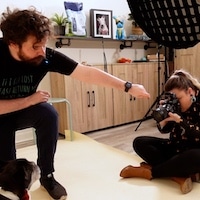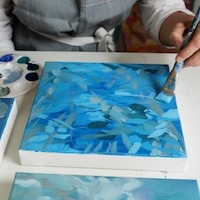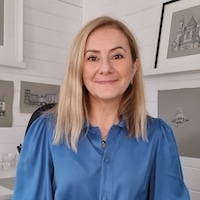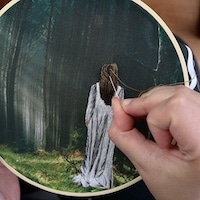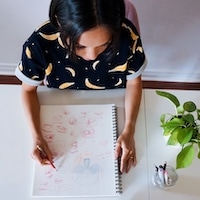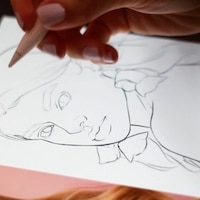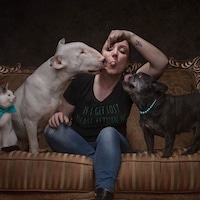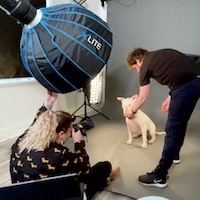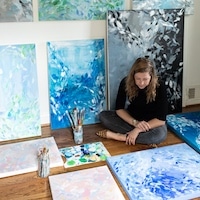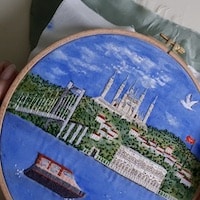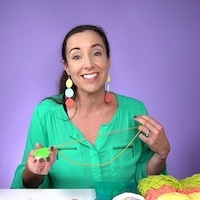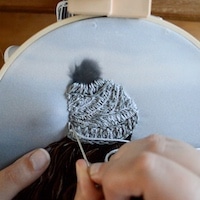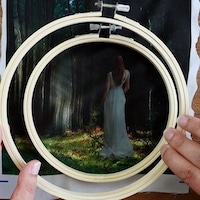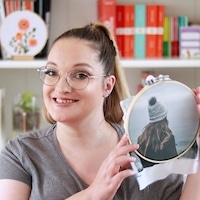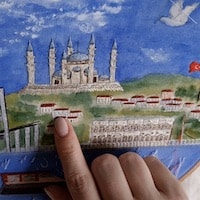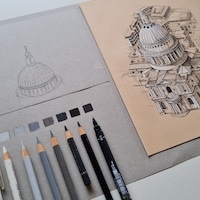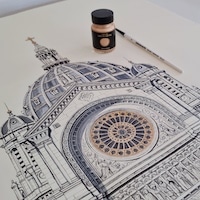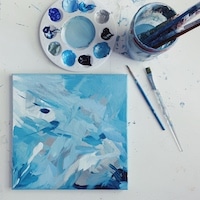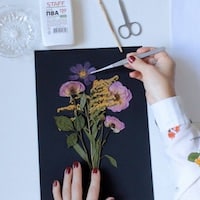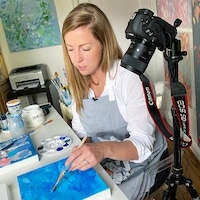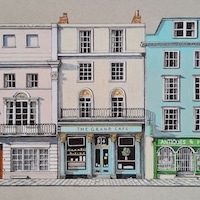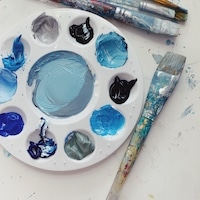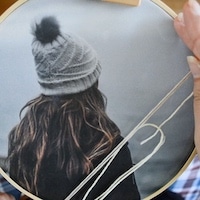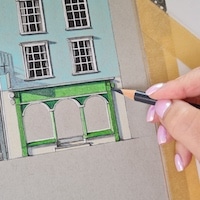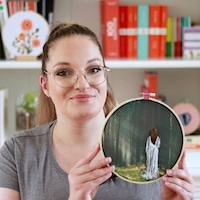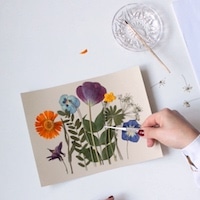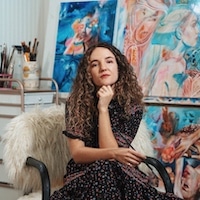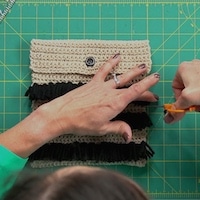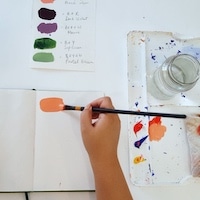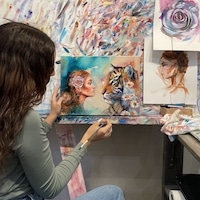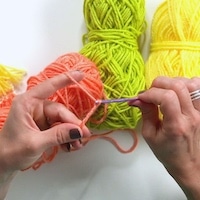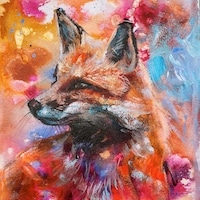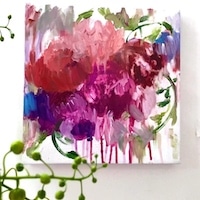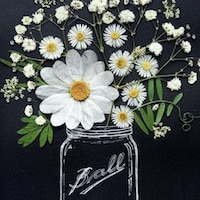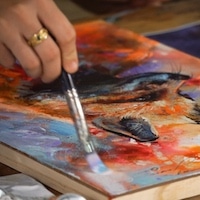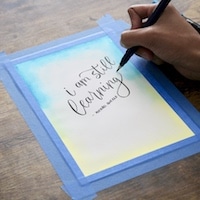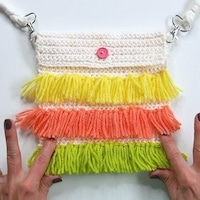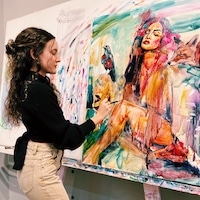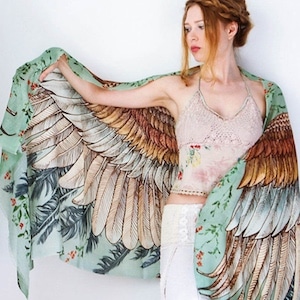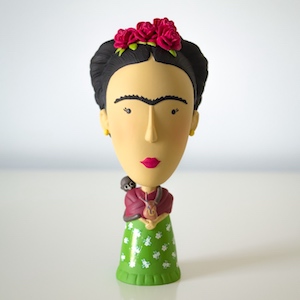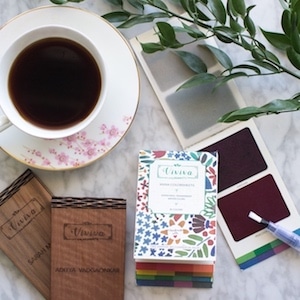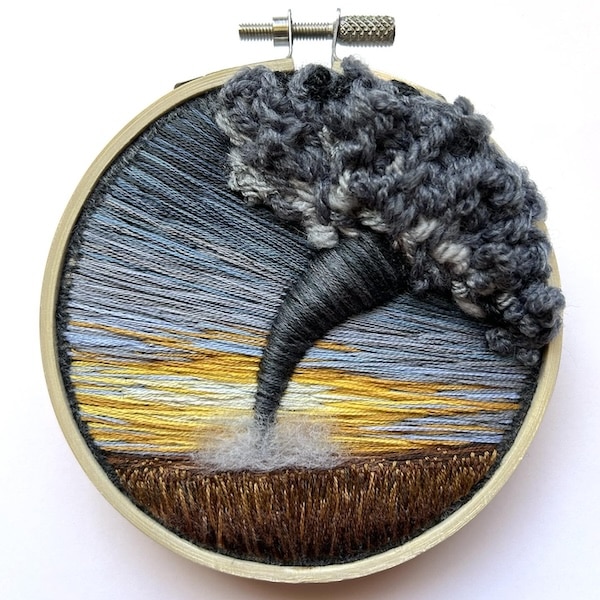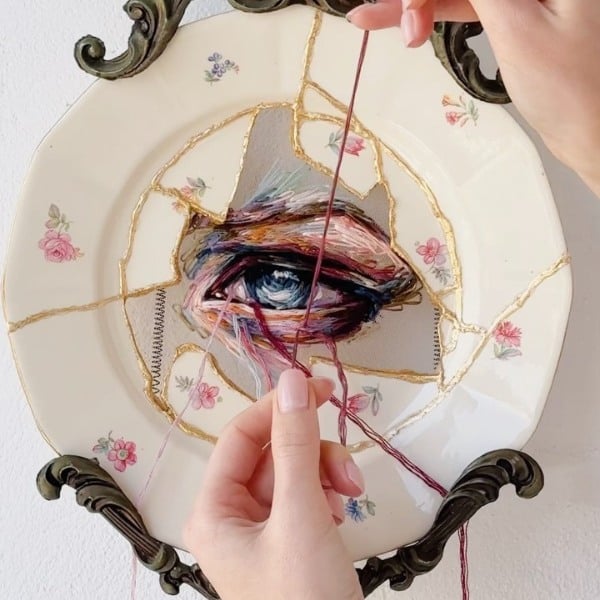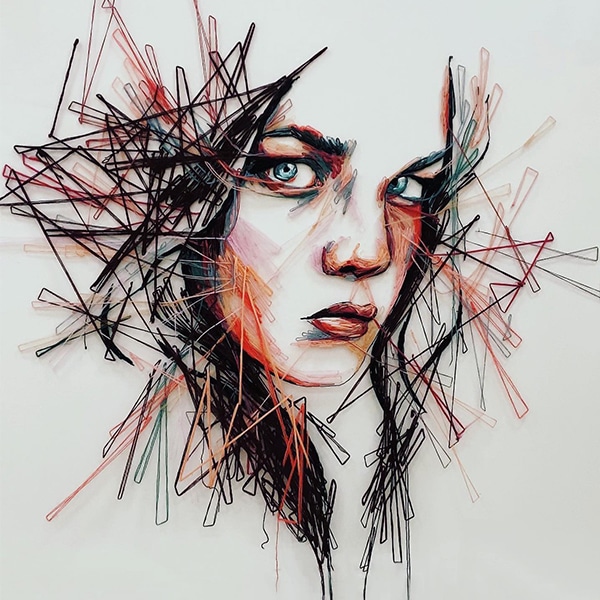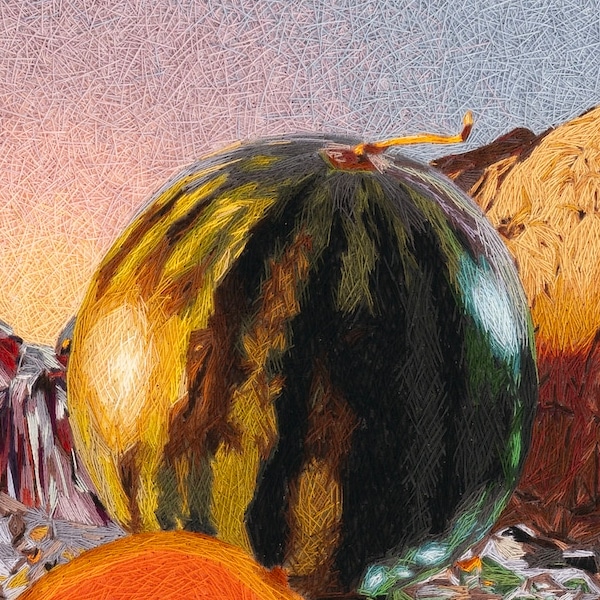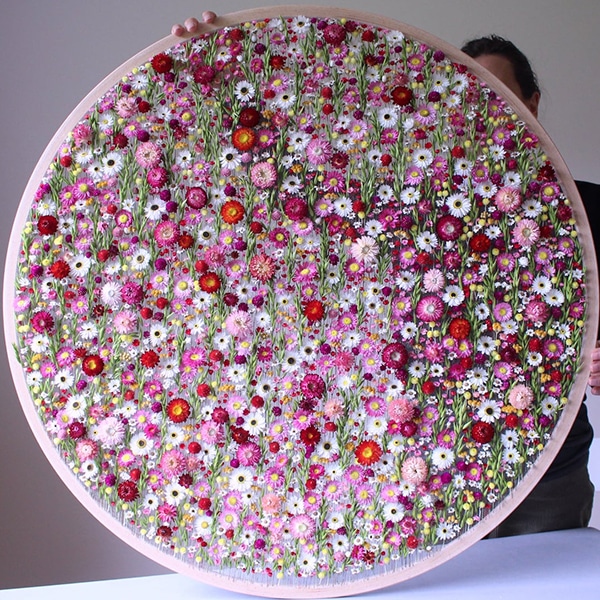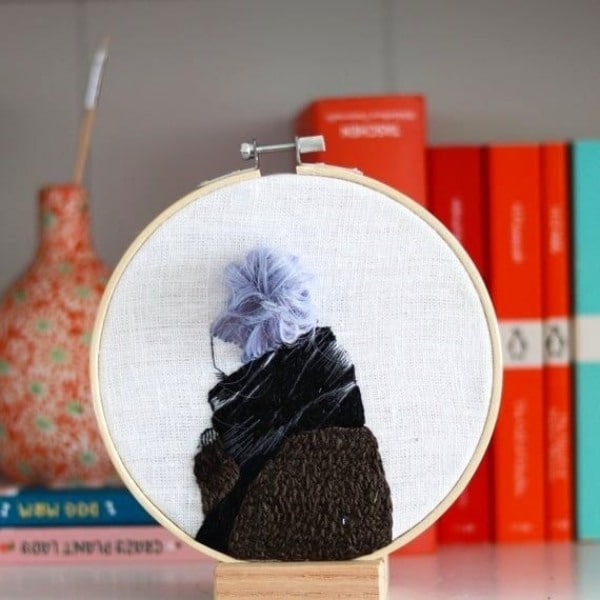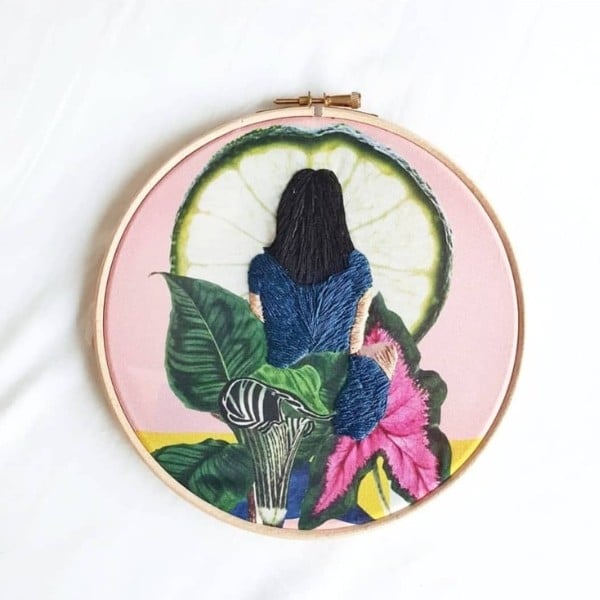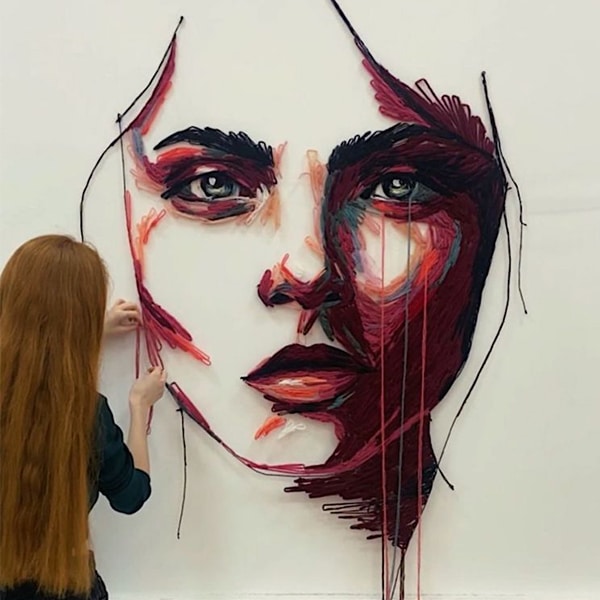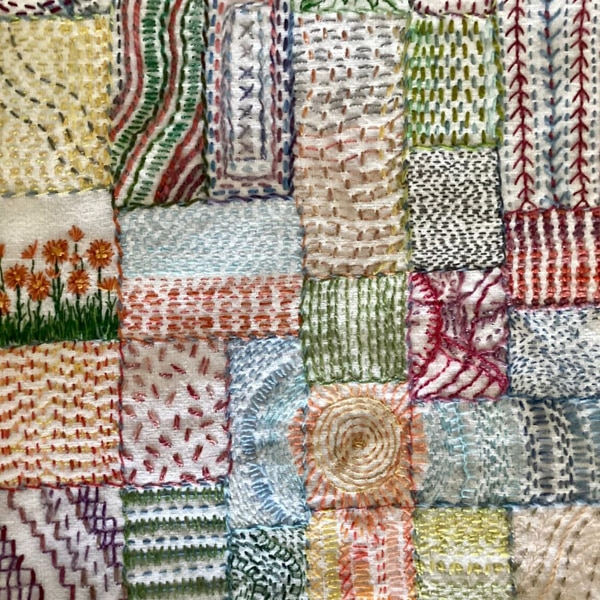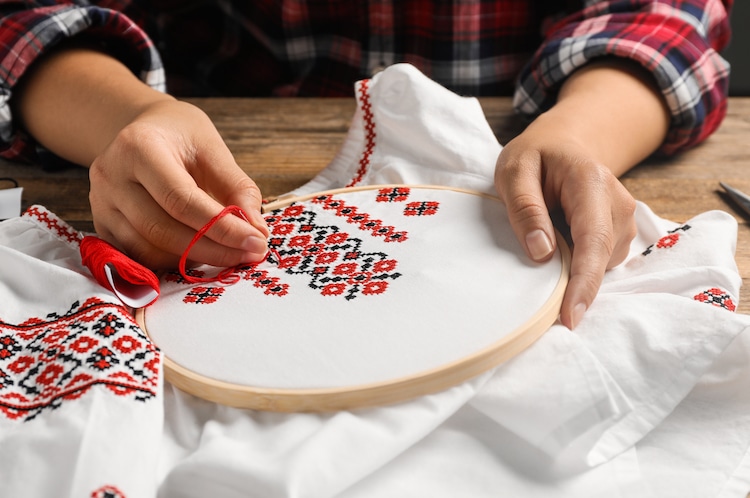
Photo: NewAfrica/Depositphotos
This post may contain affiliate links. If you make a purchase, My Modern Met may earn an affiliate commission. Please read our disclosure for more info.
The art of hand embroidery has many techniques for stitching designs onto fabric. Just like approaches you’d find in drawing, there are a variety of ways to create images in thread that range from stylized to lifelike. For those that want to incorporate realistic imagery or the feeling of movement into their stitching, thread painting is the technique to use.
What is the thread painting craft?
Thread painting, also called needle painting, is an approach that uses a combination of long and short straight stitches and a variety of colors to produce embroidery that has the same qualities as a painting.
While you can create embroidery on a sewing machine, that's not what we're referring to here. All of the thread painting featured here is completed as a hand embroidery technique.
The technique originated with 17th-century crewel embroidery, but the premise today is the same; each stitch is like a brush stroke, and with the help of different colors of floss, the images can look like a photorealistic work of art or have an Impressionistic feel. It all depends on the type of fabric, size of needle, and thickness of thread that you use.
Basic Thread Painting Tools
Before you begin needle painting, it’s important to start with the right tools. Because the approach is very stitch intensive, it’s best to find a medium-weight fabric (like linen or cotton) that will remain firm as you sew. Another way to keep the fabric taut is to use an embroidery hoop or frame—otherwise, your stitches will sag.
View this post on Instagram
For needles, it’s recommended to use a size 8, 9, or 10 depending on the number of strands of thread you’ll use to sew. The smaller the needle size, the fewer strands you’ll want to thread through it—between one and three are recommended for thread painting. The number of strands you use also depends on the width of the stitch you want to produce. For thicker lines, use three strands. For fine lines, use one. Some embroiderers also employ multiple needles simultaneously in order to stitch faster—especially with several colors of thread.
Traditional crewel embroidery features wool thread. Although it is still used today, DMC floss is much more common. The six-ply cotton embroidery thread comes in over 450 colors and is perfect for selecting a palette; you can easily pick four or five similar colors that range from light to dark.
Inspiration for Your Own Thread Painting
Traditional thread painting uses short and long stitches (placed side by side) in order to gradually build color and form. It’s recommended that the long stitches be about half an inch while the shorter ones measure a quarter inch. Make sure that you stick to varying the two lengths in order to ensure that your colors blend beautifully. This is especially important if you're trying to create a realistic image, such as animal fur in a pet portrait.
View this post on Instagram
Of course, contemporary embroiderers don’t always play by the rules. Check out how different artists have used needle painting in their work in a variety of ways.
Emillie Ferris
View this post on Instagram
Emillie Ferris infuses realistic thread painting of nature with decorative formations of flora, fauna, and even a bit of magic. Her meticulous works feature bees, moths, and mushrooms with three-dimensional coloring against the backdrop of stylized elements. The result is a juxtaposition that shows off the beauty of both approaches to image-making.
Danielle Clough
While thread painting is often used in realistic embroidery works, Danielle Clough has a different idea. She builds form with a vibrant palette and electrifies her subject matter. Purple shadows and bright blue highlights? Yes, in her world!
Vera Shimunia
View this post on Instagram
View this post on Instagram
It’s challenging to convey a depth of field with thread, but Vera Shimunia achieves it. Using fuzzy yarn, she combines the texture with tighter-stitched embroidery floss. The result is a field of flowers gradually leading towards a sweeping mountainscape and sky. Shimunia is also known for her three-dimensional puffy clouds that add both visual and physical texture to her sprawling landscapes.
Lisa Smirnova
Lisa Smirnova emphasizes the “thread” in thread painting. Her works utilize paint, and they imagine thread as individual brush strokes. It gives her work a Van Gogh-esque feel. Beads and other baubles add even more visual interest to create exciting mixed-media embroidery.
Ell Violet
View this post on Instagram
Ell Violet conveys the beauty of birds through careful thread painting. Each stitch is like a feather. Blending reds into grays—and making it look natural—can be hard, but here Ell Violet has bridged this hue gap in a way that looks lifelike.
Kate Hughes
View this post on Instagram
Katie Hughes has a gestural, painterly quality to her stitching. By layering light-colored threads atop dark hues, the threads resemble loose brushwork that is reminiscent of a drawing or quasi-abstract painting.
Desert Eclipse Studio
View this post on Instagram
View this post on Instagram
The long-and-short stitch is often used in thread painting. But, it’s not the only stitch available for the technique. Desert Eclipse Studio varies floss hues on the ground of this incredible embroidered scene. The French knot stitch looks like sand or dirt, and the subtle color choices make it look like the real thing.
Josefina Jimenez
Sometimes, thread painting can include acrylic pigment. Artist Josefna Jimenez uses paint to depict all sorts of leaves and blooms. Once dry, she uses thread to create the fine details on the petals and leaves.
Esin Altay
Esin Altay recreated Degas’ painting The Tub using carefully blended thread and directional stitching. Here, it’s one thing to marvel at the colors, but also pay attention to how the direction of the thread adds body and movement to the piece.
This article has been edited and updated.
Related Articles:
Everything You Need to Start Stitching Your Own Embroidery
Stylish Supplies and Cute Kits Perfect for Starting Embroidery
29 Hand Embroidery Patterns Ready to Download and Start Sewing

